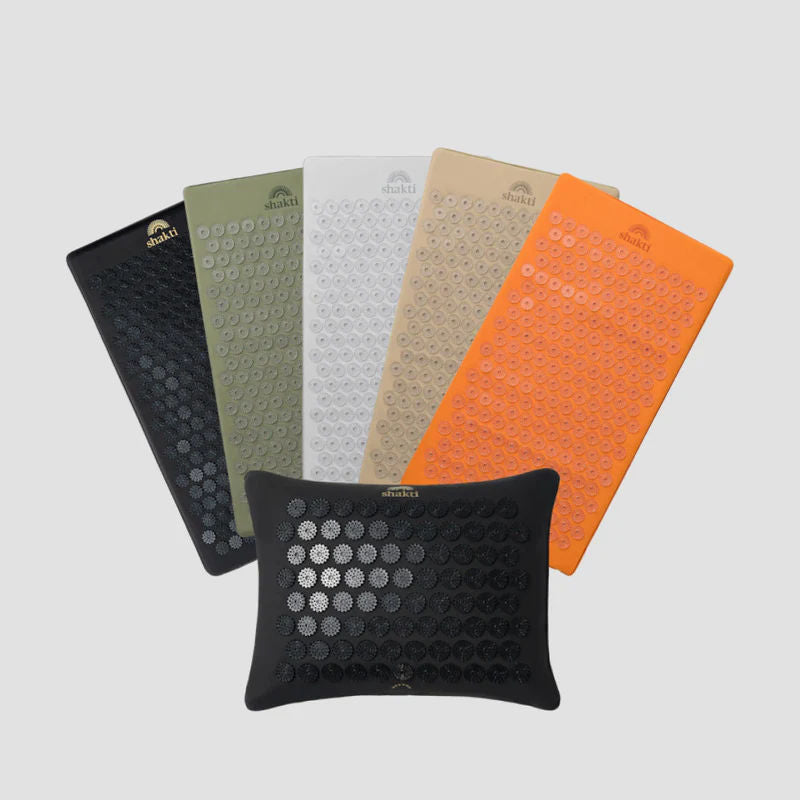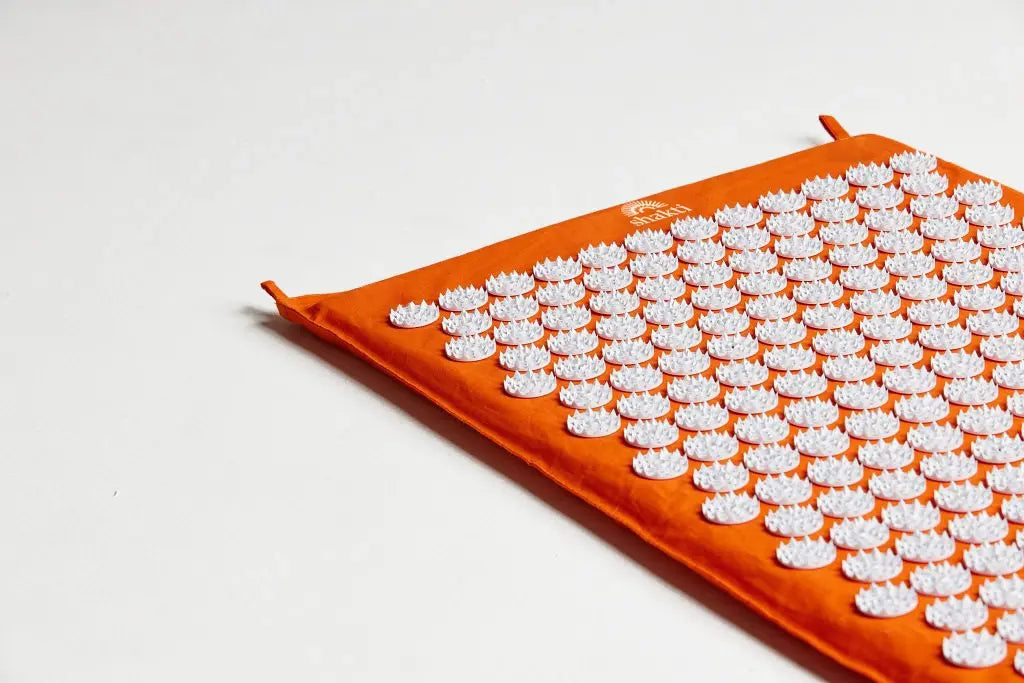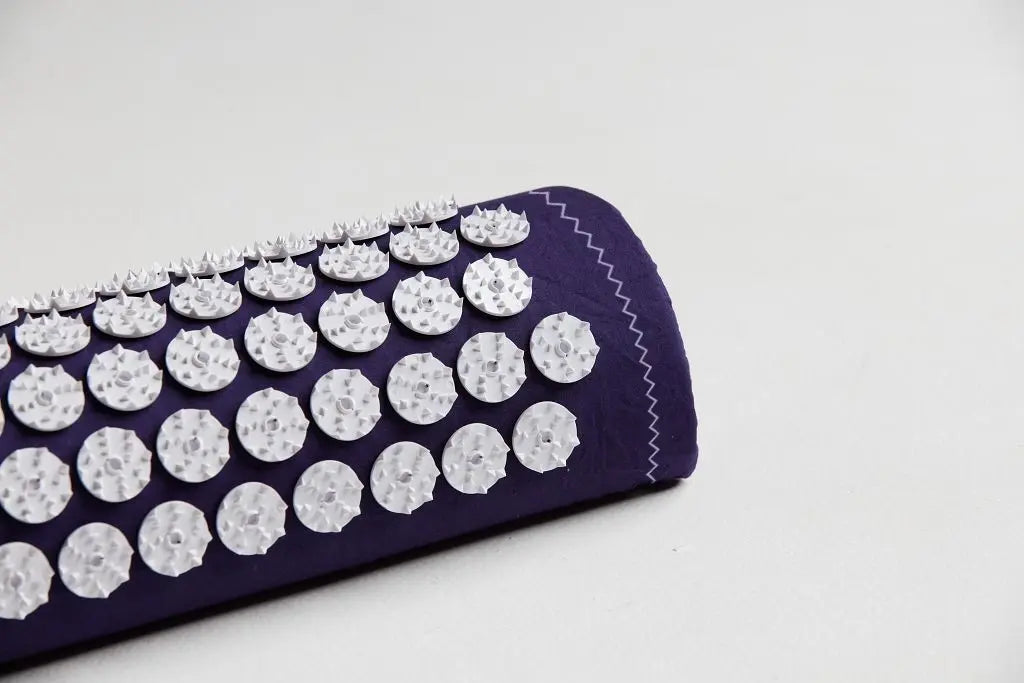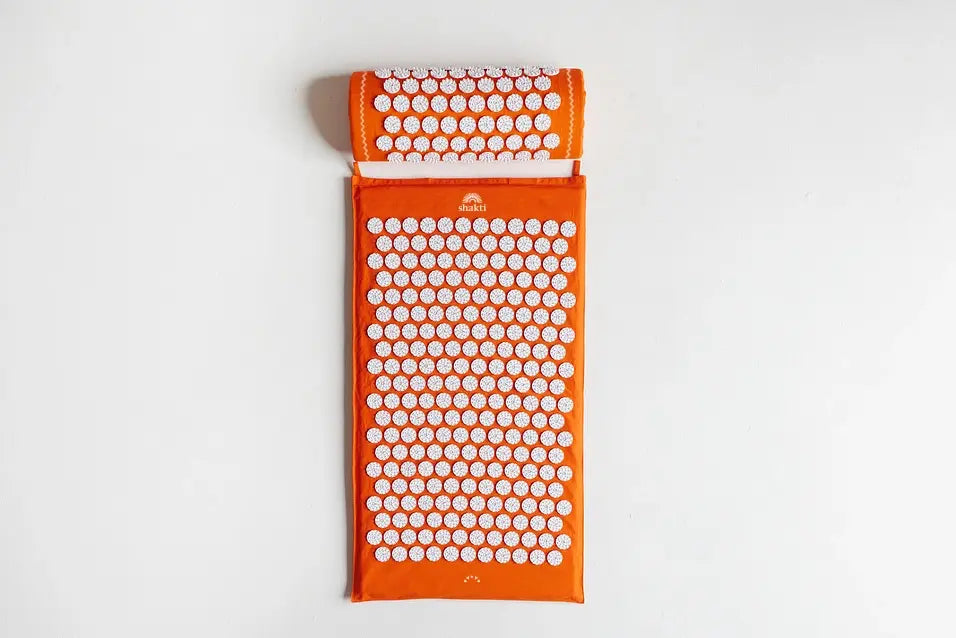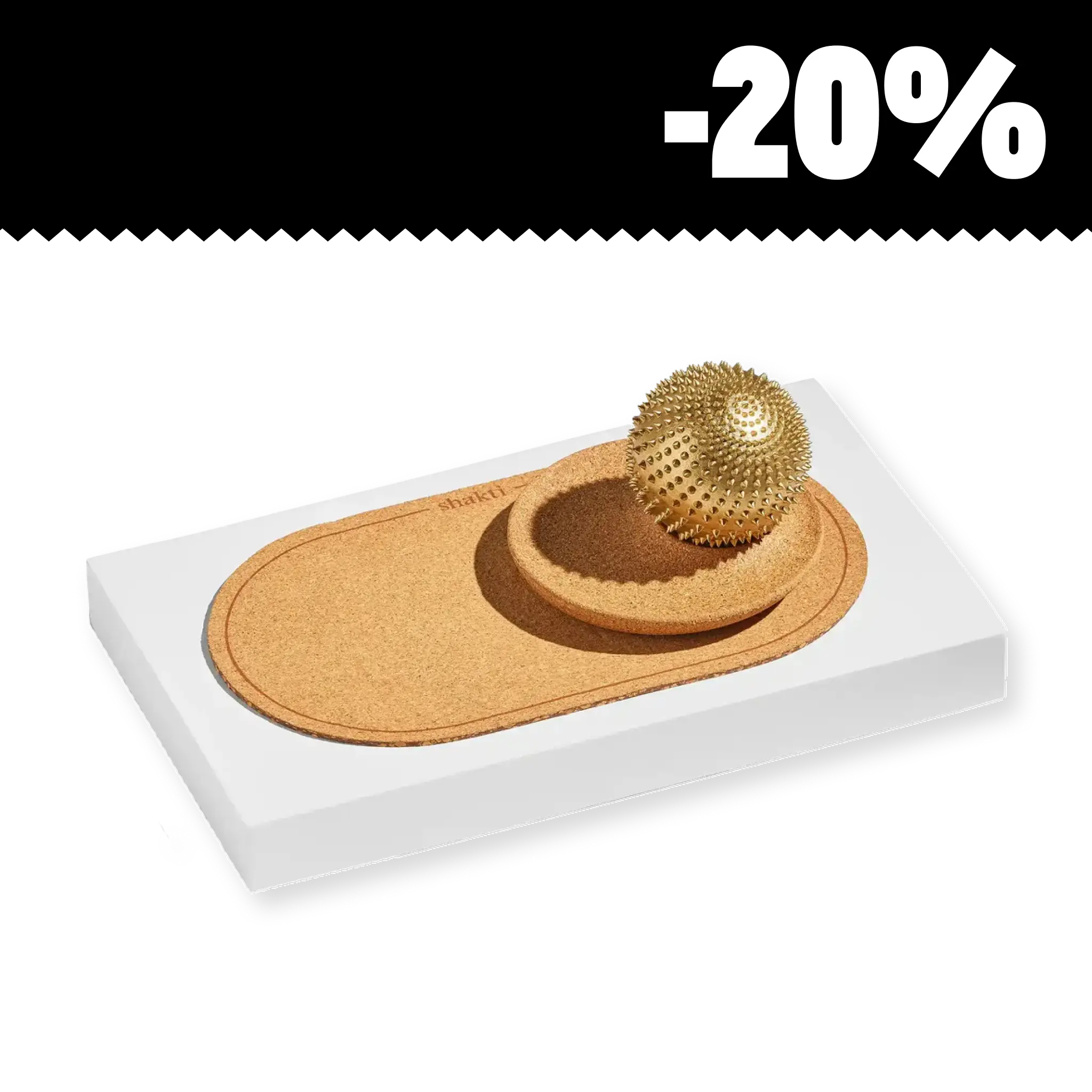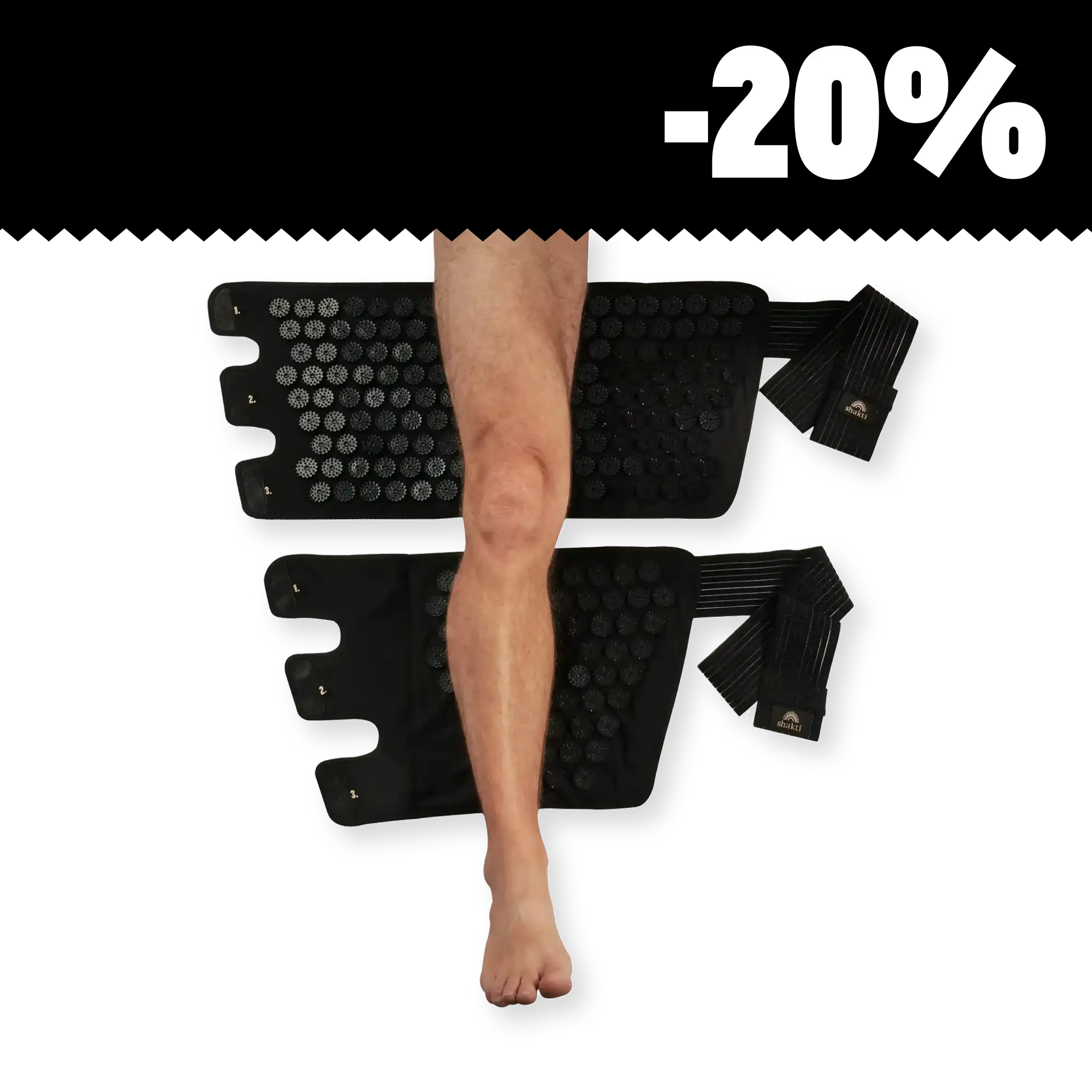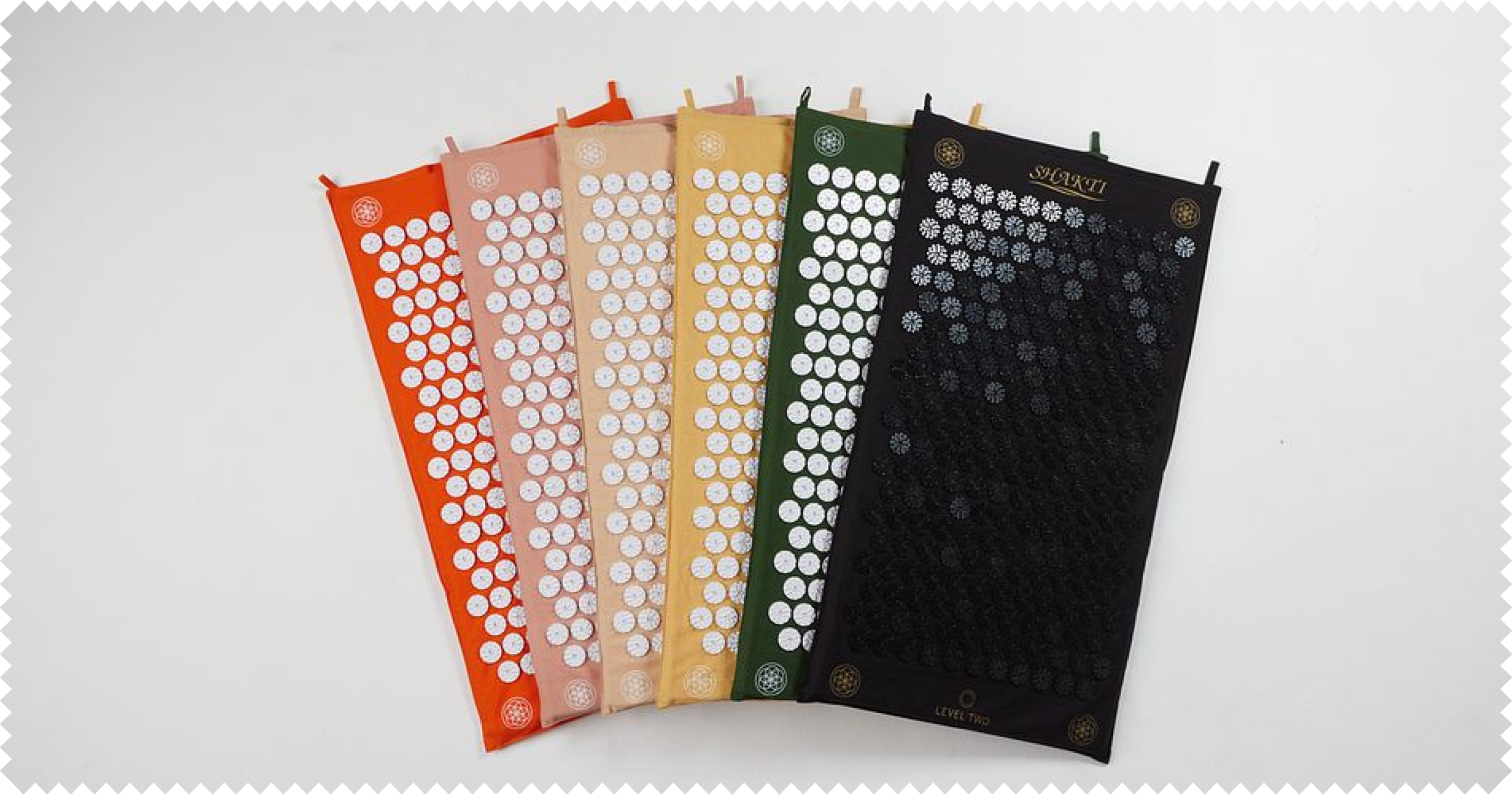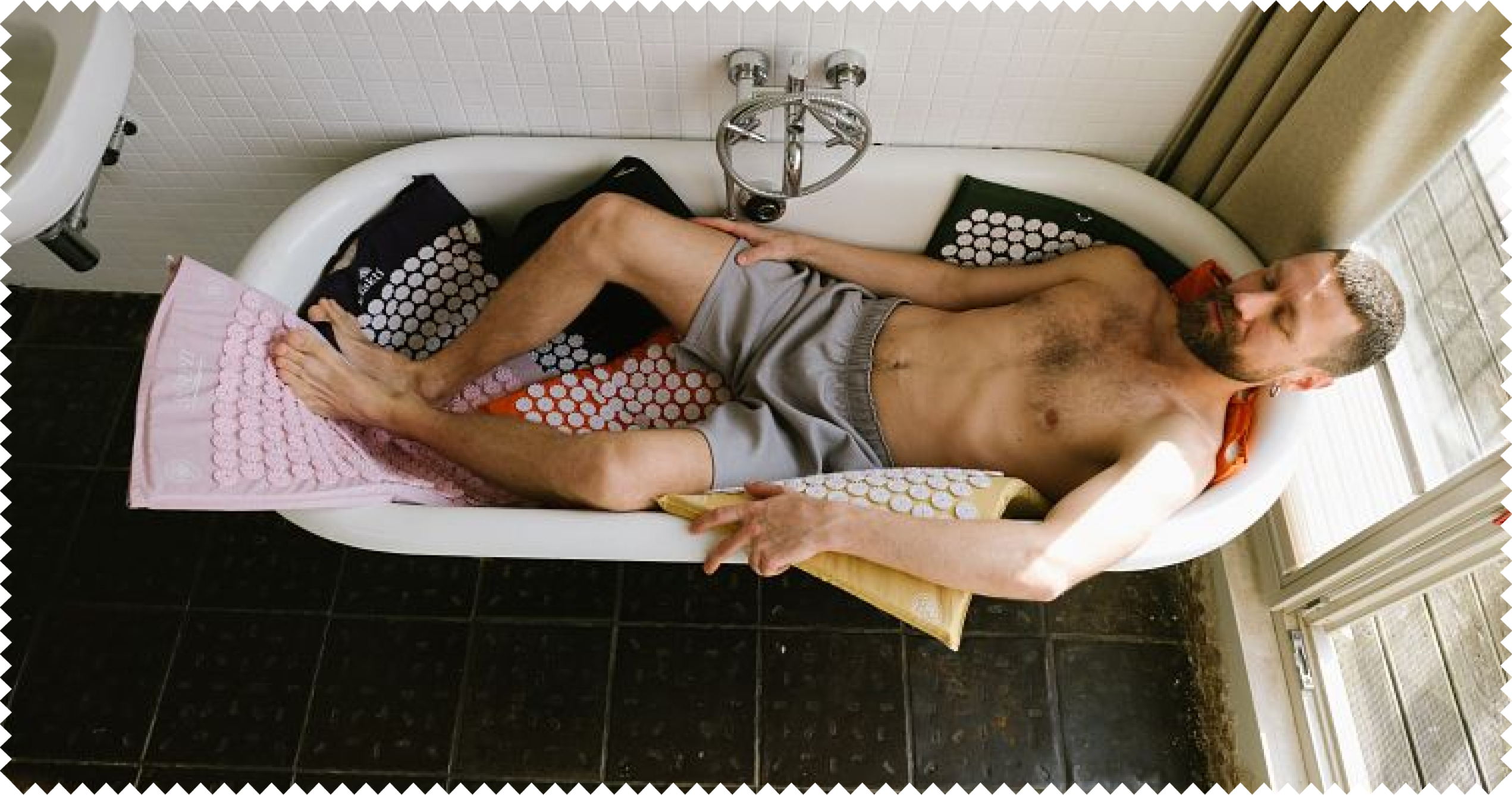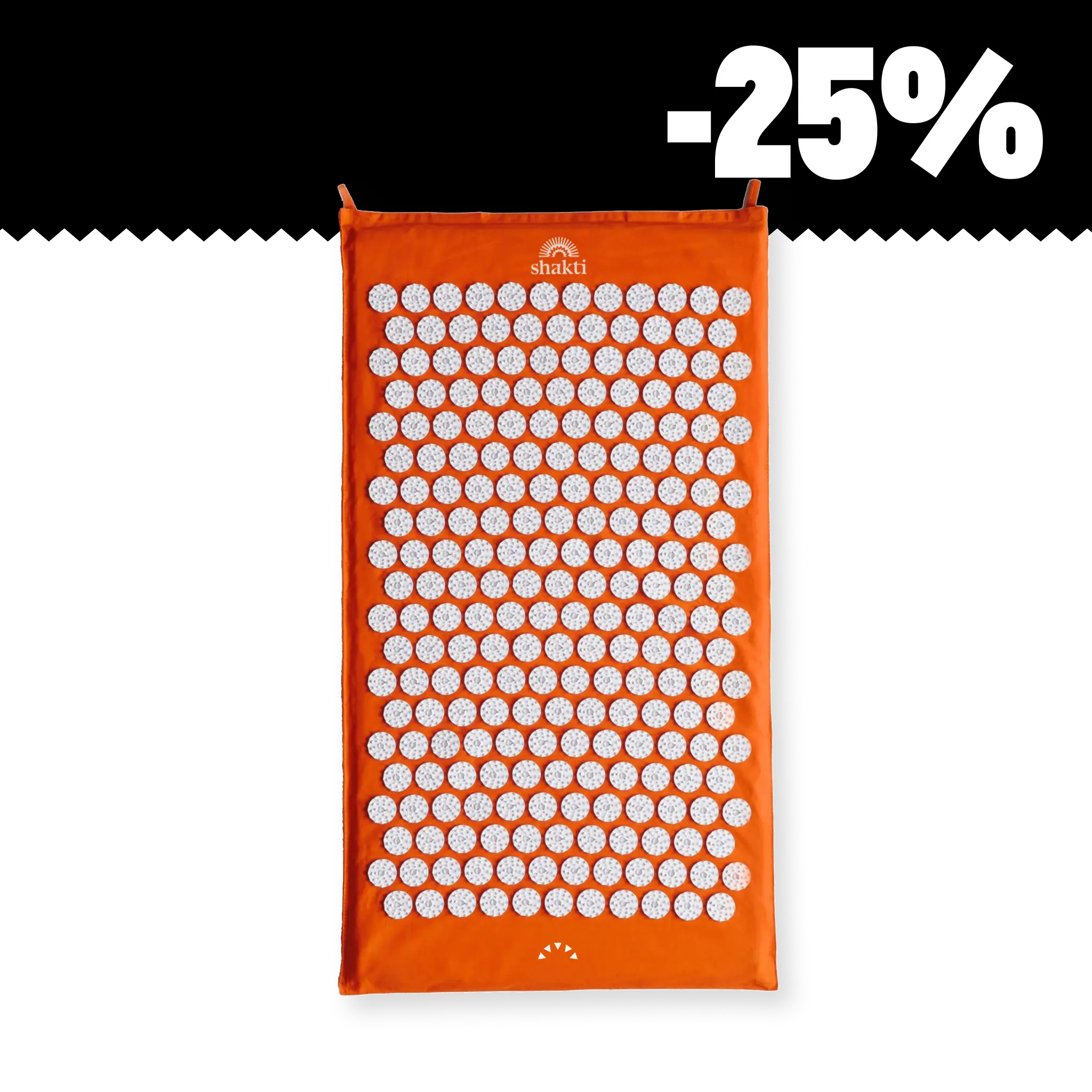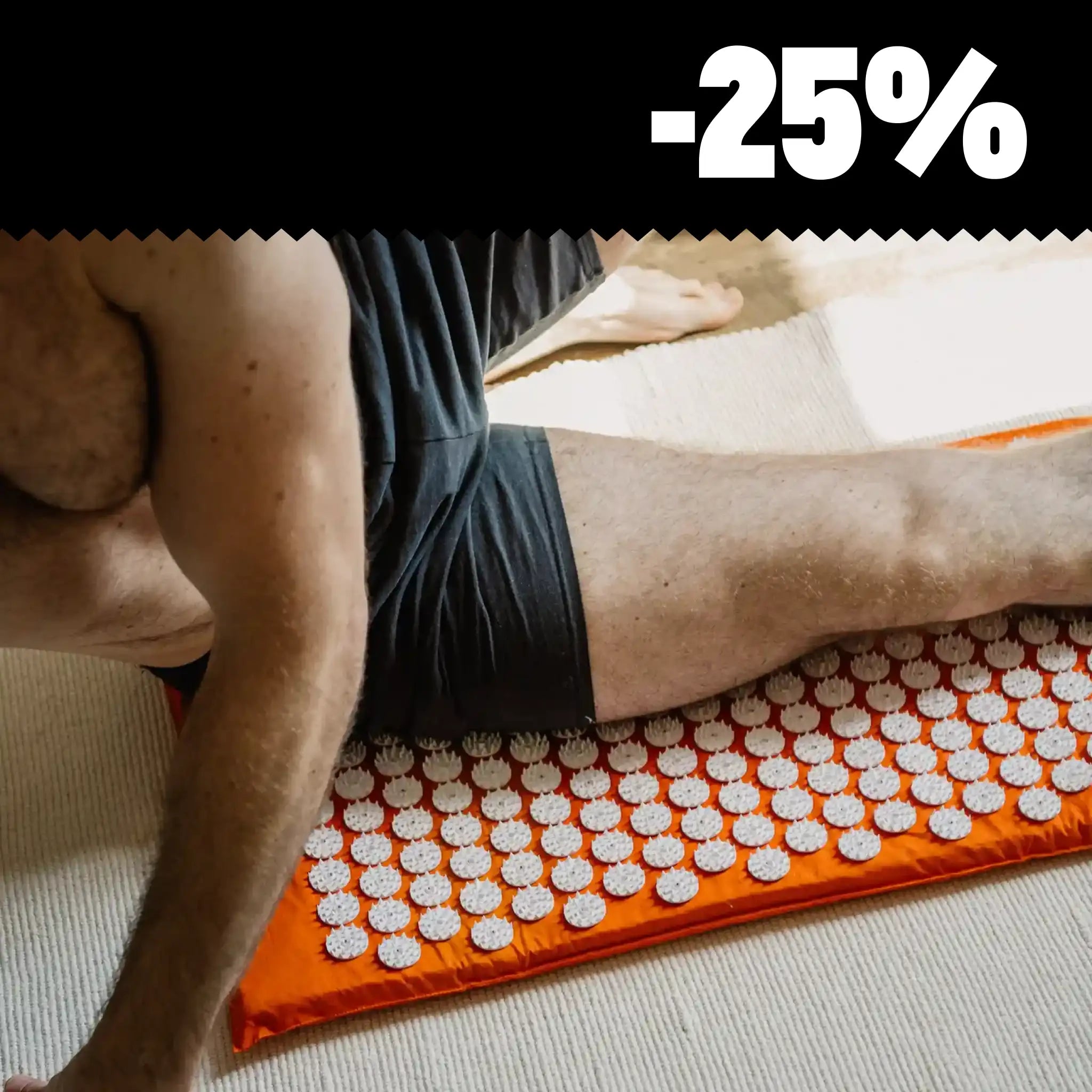- The hip as the second largest joint in the human body
- Localize hip pain: Where exactly is the pain felt?
- Hip osteoarthritis is one of the most common triggers of pain
- Hip pain at night: menopause is often the cause
- Hip pain & pregnancy: these are the alarm signals
- Hip pain after efforts: This may be the cause
- Hip pain after vaccination is mostly muscle pain
- Sudden hip pain: This can be behind it
- What to do for hip pain?
- Acupressure for hip pain: home remedies with positive effects
Pain in the body can generally have very different causes. It can be caused by incorrect movements, osteoarthritis or inflammation in the muscles, tendons, bursae or nerves and is often easy to treat. It is important that you don't wait too long, but look for the cause of the pain in your hip quickly and take the right countermeasures. Here we have put together a compact overview of the causes of hip pain and give you valuable tips on what you can do to combat unpleasant pain in the hip joint.
The hip as the second largest joint in the human body
The hip is a comparatively large joint in your body that creates a connection between the pelvis and the legs. In fact, it is the second largest joint in the human body after the knee. A central part of the hip is the hip joint; a ball-and-socket joint that makes movements in various directions possible in the first place. The hip joint performs two central tasks in the body.
-
Establishing mobility
Rotations, extensions and flexions are only possible through the hip joint. However, it is also under constant strain as a result, which favors the development of pain. -
Cohesion of the structures
The second task of the hip joint is to hold the individual structures together.
The hip in its entirety consists of the acetabulum, the femoral head, the ligaments and the individual muscles and muscle groups that enable movements in various directions. Both the femoral head and the acetabulum are covered with a layer of cartilage that is responsible for fluid movement. At the same time, this layer prevents premature wear of the joint.
Localize hip pain: Where exactly is the pain felt?
Pain in the hip Like all pain, hip pain is unpleasant and annoying. On the other hand, it restricts your movement and also your quality of life. This makes it all the more important that you start looking for the cause so that your hip pain soon becomes a thing of the past. Hip pain symptoms can occur in very different parts of the body and can be caused by numerous factors.
Hip pain on one side is the rule
Only very rarely does hip pain occur on both sides. As a rule, you feel the hip pain on the right or you feel the hip pain on the left. However, you may also experience pain on both sides. To find the right treatment for hip pain the cause must be clarified. Hip osteoarthritis is often the cause. However, an injury, sciatica syndrome sciatica syndrome or a slipped disc in the lumbar spine can also trigger the pain.
If pain occurs above the hip, this indicates bursitis. The pain is often felt as pulling or stabbing. It often sets in spontaneously after a movement. Also hip pain on the outside or pain in the hip when lying on the side can also indicate inflammation of the bursa. Pain in the hip with radiation into the leg is frequently described. This pain is very often caused by a pinched nerve. However, radiating pain can also be caused by a slipped disc or hip arthrosis: Pain in the lower back, hip and groin, on the other hand, indicates a so-called SIJ blockage, where the sacroiliac joint is blocked in the area of the sacrum and the pain radiates in all directions.
Hip osteoarthritis is one of the most common triggers of pain
If the trigger for pain in the hip is hip arthrosis the symptoms often develop gradually over several months. With hip osteoarthritis, the layer of cartilage that forms a protective cushion for the bones in the hip joint becomes thinner and thinner. This increases the pressure on the bones and gradually restricts the mobility of the hip joint. The first signs are usually pain on movement, which is only mild at first but then becomes increasingly severe. In some people, hip osteoarthritis also comes in episodes. The pain can radiate into the leg. It is often accompanied by stiffness in the joints. The best treatment option for osteoarthritis is certain movement exercises.
The following risk factors promote joint wear:
-
Severe overweight
-
Heredity/family predisposition
-
Heavy physical load
-
Inflammatory joint diseases
-
Previous hip injuries
Often, several factors come together that ultimately trigger hip osteoarthritis. Affected are mostly women and men from the age of 45.
Hip pain at night: menopause is often the cause
While everyday life often offers a lot of distraction, sometimes certain pains only become apparent at night. Here too, the causes can be very varied. If the pain occurs at night in women who are going through the menopause then a drop in oestrogen may be the cause. The hormonal changes during this time increase the risk of bone loss. Oestrogens play an important role in supplying the synovial membranes and connective tissue around the joints with fluid and promoting blood circulation. A drop in this hormone leads to an undersupply, the joints stiffen and become more immobile. Oestrogens also have an anti-inflammatory effect. If the oestrogen concentration in the body decreases, the risk of inflammatory diseases such as arthritis increases.
Hip pain & pregnancy: these are the alarm signals
Many pregnant women complain of pain in the hip area as their baby bumps grow. The main culprit is the hormonal changes that loosen the connective tissue and make the tendons and ligaments more elastic to prepare them for birth. In addition, the weight gain creates increased pressure on the nerves in the hip area, which can also be the cause of the pain in the hip joint.
If the pain in the hip is sharp and can be felt even at rest, a visit to the doctor is advisable. Increased stress on the hip can quickly lead to bursitis of the hip joint or even aseptic hip inflammation. Due to the change in body center of gravity during pregnancy, the hip can sag during the night. This problem can be easily changed by changing the lying position or by adjusting the slatted frame.
Hip pain after birth: Symphysis loosening is often the cause
Unfortunately, not all pregnancy complaints disappear immediately after birth. If pain still occurs in the hip after birth, then in most cases a loosening of the symphysis is behind it. The symphysis is one of the fibrocartilages that hold the pelvis together. More precisely, it is a connecting joint between the right and left pubic bone, which under normal circumstances you do not even notice in your body. Together with the sacroiliac joints, the symphysis provides stability to the pelvis and allows little room for movement to protect the organs behind it, such as the bladder and intestines.
During pregnancy, the pelvis prepares for birth. In order for the baby to fit through the pelvic inlet, the pelvic girdle must loosen. This process causes a pulling sensation in some women, which is perfectly normal. However, if the cartilage structure is overstretched, painful symphysis loosening can occur.
These are the symptoms of symphysis loosening:
-
Severe pain in the hip or lumbar region
-
Restrictions in walking (waddling gait)
-
Pain when lying & turning over in bed
-
Pain when climbing stairs
If you want to know if it really is symphysis loosening, you can tell by a simple self-test. In this case, hip pain occurs when you lie flat on your back and bend one leg. However, only a doctor can make a definitive diagnosis.
Hip pain after efforts: This may be the cause
Do you always feel the pain always after physical exertion or after sport? Then the cause is often overloading of the joints in the hip area. Normally, sport and exercise are good and important for the joints. They need this movement to stay in shape and build up bone substance. Movement is also important for the joints so that they form sufficient synovial fluid and remain mobile. If hip joint pain always occurs during or after movement, then you should take a closer look.
Hip pain after walk due to muscular imbalance
Normally, a simple walk or even a longer but relaxed hike does not put too much strain on the hip. However, if hip pain occurs during walking or even hip pain after hiking, then the cause may be a muscular imbalance.
If you work in a predominantly sedentary job and move little in your daily life, this can shorten the groin and hip muscles. When walking, they no longer allow sufficient range of motion, so that muscles and vision are quickly overstimulated, even with simple movements. This leads to pain. Hip, tendons and ligaments are in an imbalance. Targeted exercises and regular exercise can eliminate this imbalance and counteract hip pain caused by muscles.
Hip pain after jogging and the running workout
If you always feel the pain in your hip during or after physical exercise, then it is load-dependent pain. Regular jogging is very healthy for the body and keeps it fit. However, pain is always an alarm signal that you should take seriously. Pain in the hip can be caused by overload and overexertion. If you don't give yourself enough time to recover after running sessions, then you may experience bursitis, which you perceive as a deep-seated pain.
Incorrect loading can also be the cause of a painful hip. For example, if you wear unsuitable shoes with too hard soles and too little cushioning, this can lead to muscular imbalances. If you don't do anything about it over a longer period of time, this can lead to a shortening of the hip and leg muscles. It is important that you get good shoes for your training or, at best, do a running analysis beforehand to counteract foot and leg axis misalignments.
Why does pain in the hip occur at rest?
Hip problems can occur even without prior movement. Do you feel hip pain when sitting or does hip pain become noticeable when lying down? Especially when lying down, gravity only affects the body to a small degree. So the pain cannot be caused by too much strain. If pain occurs at rest, then this may indicate inflammation. An infection involving certain nerves from the hip region may also be among the possible causes. If you feel the pain primarily while sitting, it can also come from the buttock region and extend into the hip.
Sometimes pain at physical rest is also due to a previous overload. If you have exerted yourself at work or during sports, the structures become irritated. However, the pain then only occurs when standing or lying down. If the pain persists over a longer period of time, you should also investigate the suspicion of a herniated disc with involvement of the nerve roots.
Hip pain after vaccination is mostly muscle pain
Most vaccinations are administered directly into the muscle. Since the muscles are only traversed by very fine vessels, the vaccine only gradually enters the bloodstream and the immune system has sufficient time to become accustomed to it. Vaccination is often administered in the upper arm, but the thigh or the gluteal muscle are also suitable sites.
After vaccination, there may be local pain at the injection site or in the affected muscle. However, this is a good sign, which shows that the body is reacting to the vaccination. The immune system produces antibodies. As a rule, the discomfort subsides on its own within a few days.
Sudden hip pain: This can be behind it
Treading acute hip pain it should always be examined by a doctor. There are many possible diseases that can trigger acute pain. This makes it all the more important to clarify the causes of the pain. The reasons for acute pain can be found in the following overview.
This is how inflammation of the hip becomes noticeable
One reason for a sudden onset of pain may be acute inflammation of the hip. The medical term for this is "coxitis". As a rule, such an inflammation is triggered by joint wear (arthrosis) or as a result of a rheumatic disease. More rarely, infectious inflammation - triggered by bacteria - is also the cause. In this case, the pain is accompanied by other symptoms such as fever and fatigue.
These are the typical symptoms of coxitis:
-
Severe pain in the groin
-
Movement pain in the hip
-
Load restriction & relieving posture
-
Fever & Fatigue
Sometimes other diseases can also be responsible for the development of inflammation in the hip area. For example, if bacteria get into the bloodstream during a middle ear infection, they can settle anywhere in the body - including in the hip. Young children who get a bacterial infection of the hip joint due to an inflammation are particularly at risk. A typical childhood illness is the so-called hip rhinitis. The causes of this pain, which is usually unilateral, are not yet fully understood. Doctors assume that it is an immune reaction of the body as a result of a viral infection. Depending on the cause, coxitis is usually treated with medication. Cooling the joint and immobilization may also be appropriate measures.
This is how you can recognize a pelvic strain or pelvic wobble
Strain or wringing of the pelvis is not very well known as a cause of pain in the hip. In this condition, the lumbar-abdominal muscle is twisted in on itself due to tension. This, in turn, can trigger pain that radiates throughout the body and can have painful effects on the head and neck, as well as back pain, leg pain, and acute pain in the hip and groin.
Since the pain of a pelvic wobble occurs in very different parts of the body and can be very diffuse, the diagnosis usually takes time. Often, the condition is due to a fall or accident that occurred some time in the past. Once the diagnosis is established, a holistic approach to therapy is usually required.
Pinched nerve: Hip suddenly hurts
Severe pain in the hip area can be caused by a pinched nerve. Poor posture or excessive weight bearing can pinch the nerve at the hip. Severe obesity is also a significant risk factor, as excessive body weight promotes pinching of the nerve. Other triggering factors can be hip joint arthrosis or overly intensive strength training. Doctors assume that heredity also plays a role.
You can recognize a pinched nerve relatively clearly by burning pain or sensations such as numbness or tingling in the limbs. The term "pinched" is somewhat misleading, however, because in most cases the nerve is merely irritated. To relieve it, the cause of the pinched or irritated nerve must be removed. You should also avoid excessive strain, take it easy and gradually resume light movements. Often, the doctor will also prescribe a mild pain medication.
What to do for hip pain?
Depending on the cause, there are many treatment options for hip pain. It is important that a doctor makes the diagnosis and that you do not experiment on your own. Otherwise, more serious causes may be overlooked and the problem may worsen or spread to other areas of your body. Once the cause is determined, there are several ways to do something about the pain. Often, different treatment methods can be combined with each other.
Do medications help with severe hip pain?
What helps with severe hip pain? Anti-inflammatory painkillers such as diclofenac, ibuprofen and naproxen can curb inflammatory reactions on the one hand and relieve pain on the other. These medications can help with hip osteoarthritis in particular. Combined exercise therapy with special exercises can also support the effect of the medication. If the medication is taken over a longer period of time, it can lead to considerable side effects.
These are the best exercises for hip pain
Exercises against hip pain are intended to mobilize the hip again without putting too much strain on it. On the one hand, they serve as prevention and can also help to relieve pain. Often, pain in the hip does not originate in the hip joint, but in the surrounding structures. In this case, exercises can relieve pain or even eliminate it completely.
Exercise 1: Squats with holding
This exercise is primarily for stretching your hips. Choose an object that is at hip level and that you can hold on to. Place your feet hip-width apart and get down on your knees while your buttocks describe a large circle to the back. Now push yourself back up - if necessary with the support of the object in front of you.
Exercise 2: Straighten pelvis
Perform this exercise from the floor, sitting on your heels. Lean far back and support yourself off the floor with your hands. The actual exercise for stretching the hips is now to straighten your pelvis, hold the tension briefly and then release it again.
These are suitable sports for pain in the hip:
-
Swimming & Aqua Fitness
-
Cycling
-
Gymnastics
-
Yoga & Pilates
-
Cross-country skiing
In general, all sports that allow flowing and gentle movements are suitable for hip pain. Make sure that your hip does not have to absorb any hard impacts.
Acupressure for hip pain: home remedies with positive effects
As complex as the hip joint is, the causes of hip pain can be just as varied. In most cases, pain symptoms are caused by excessive tension in the muscles and fascia, which puts a lot of strain on the hip joint. If you don't do anything about the constant tension, it can easily turn into hip osteoarthritis. The sooner you do something about your hip pain, the better the chances are that it will not result in secondary damage such as diseases of the bones, cartilage and joints.
About half of all hip pain does not affect the joint itself at all, but is caused by the surrounding soft tissues. When tense muscles are out of balance, they cause pain that can extend into the hip. Acupressure is a promising method that has already helped many people with their hip pain.
This is how an acupressure mat can help with pain in the hip
The acupressure is based on the idea that numerous energy pathways run through the body. Blockages within these pathways can lead to pain. An acupressure mat can be used effectively, particularly for osteoarthritis or stress pain in the hip. It consists of a large number of nubs made of hard medical plastic that exert pressure on the body. You can either lie on the mat with all your weight on it and trigger a holistic positive effect on your body or wrap it around the painful area. The nubs stimulate blood circulation and can relax the muscles.
Many users report a pain-relieving effect with regular use. It is important that you choose the right acupressure mat as the multiple pressure can take some getting used to at first. The more nubs the mat has, the better the body weight is distributed on it. Acupressure mats with fewer nubs are therefore recommended for beginners in particular.


